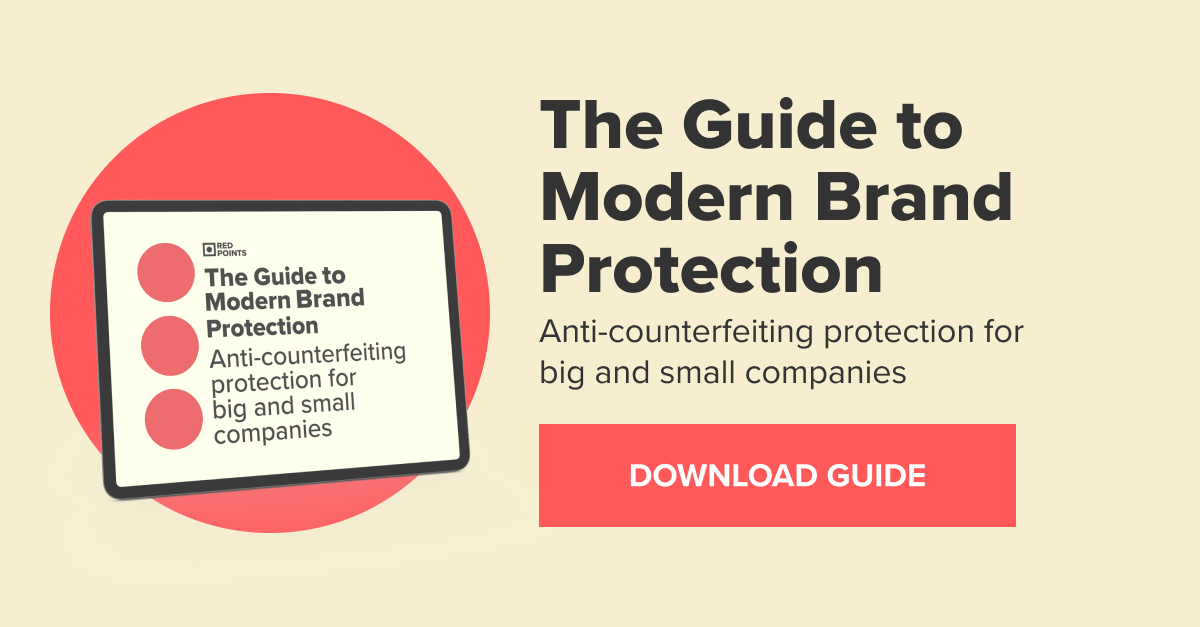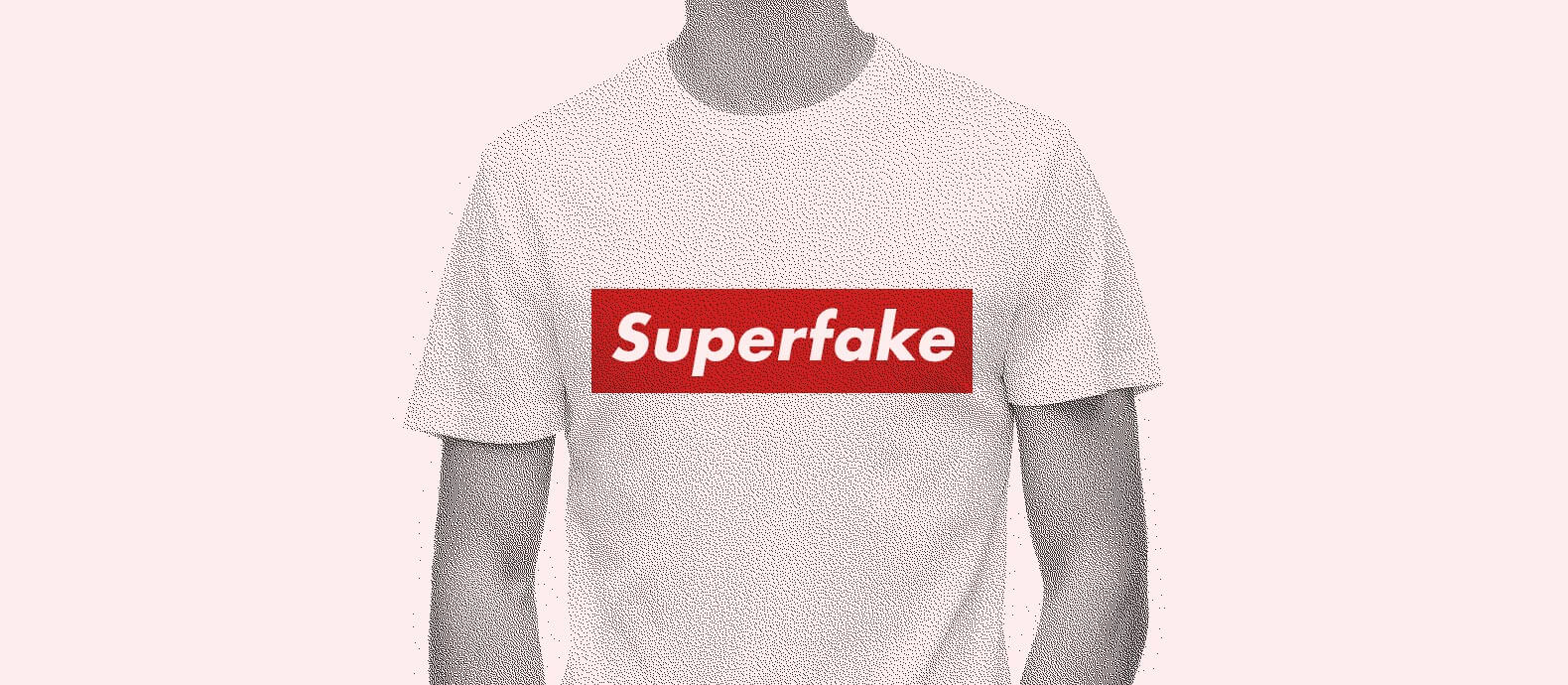Unlike other industries, it is a lot easier to fake fashion products: counterfeiters just copy-paste the look and put the brand’s name on it. Fashion forgers have as long a history as modern fashion, which can date back about 150 years ago. In a digital era, what effect does counterfeit have on the fashion industry? We will take a look at both social and economic consequences.
Summary:
- Counterfeits cause huge losses to both buyers and sellers of original products
- Fashion products such as clothes and shoes are among the most replicated items
- Marketplaces such as Amazon and Facebook are working to prevent the sale of counterfeit products
- Fake products can result in health hazards, loss of image, and slow growth

Why fashion businesses should be concerned about counterfeiters
Before moving ahead, let’s have a look at some stats that highlight the current situation:
- The global counterfeiting industry is expected to hit the $4.2 trillion mark by 2022.
- According to Ghost Data, about 20 percent of fashion products advertised on social media platforms are fake.
- Instagram appears to be extremely famous among counterfeiters and posts featuring fake luxury products have nearly tripled in the last three on the platform.
- The fashion industry lost more than $50 billion in 2020 due to the sale of fake products.
- Clothing appears to be the most counterfeited product followed by cosmetics and personal care, watches and jewelry, handbags, and luggage.
While China is said to be the largest manufacturer of replicas, they’re now being produced in other countries as well including India, Pakistan, and Mexico. Luxury brands are the biggest victim including big names like Rolex, Louis Vuitton, and Gucci.
Why do people purchase counterfeit clothes?
Consumers purchase fakes due to a variety of reasons. In most cases, it is exclusivity that attracts them. According to this study, social pressure can force people to buy fakes.
Buyers attempt to possess something that is not widely available but most of them cannot afford it. As a result, consumers (especially young consumers) have turned to fakes, and huge fashion replica communities have appeared on Reddit. However, unfortunately, not everyone who buys a fake product is aware of it being fake as some sellers deceive consumers and offer replicas in the name of genuine products.
Consumers are not always aware of the ways to identify a real product, which can leave them robbed. Brands need to work on educating consumers and making it easier to identify authentic products.
Some companies have started to issue QR codes, labels, and identification marks to make it difficult for counterfeiters to cheat people.
How fashion counterfeits impact brand reputation and identity
While the market for counterfeits is big, the general consensus appears to be mixed. People like and do not like fake products due to a variety of reasons. Counterfeits don’t offer the same look or quality that genuine products do. They are less durable, rarely reliable, and often dangerous to use.
According to reports, wearing fakes can also have a psychological effect. It’s believed that polishing your image with counterfeits may lead to cheating, cynicism, and lying. Some experts believe that wearing fake products to impress others is a sign of low self-esteem. Hence, it shouldn’t come as a surprise that people tend to look down on consumers who buy or use fake products, especially those who try to pass off fakes as real goods.
Still, people buy fake goods because they want to save money. It’s said to be suitable in some sections of the community and looked down on in others.
The rapid growth of fast fashion has changed the way people perceive fashion clothes. Rather than buying a piece that would last for many years, consumers have found the pleasure of buying something to be flashy for a few days.
Luxury brands are not the only victims: buying fake fashion is socially acceptable and people always believe that they can buy cheaper. Some of the most counterfeited brands include Channel, Fendi, Gucci, and Dior.
Shoe manufacturers seem to be suffering highly since 22 percent of all counterfeit goods are footwear. Some of the most copied names include Nike, Adidas, Louboutin, and UGG.
For more stats on counterfeit fashion items, head to the studies by category:
The Impact of Counterfeit Fashion Products
Counterfeit goods don’t just impact buyers but also sellers and everyone else involved with a business. Here’s how the sale of fakes impacts us:
Job Loss
This point can be a little complicated to understand since sellers of counterfeit goods also hire people. However, the fact remains that fakes are usually manufactured abroad, which exports US jobs to other countries. As a result, counterfeit goods trade costs the US more than 750,000 jobs. On a global scale, they cause a loss of more than 2.5 million jobs.
Manufacturers of counterfeit products are known to offer very low pay and forced laborers to work in poor conditions. These factories are usually situated in growing nations, which allows them to abuse workers.
Counterfeits Steal Sales
This one is easy to understand. Counterfeiters steal your buyers and cause you to suffer losses. According to reports, luxury brands lose around $30.3 billion due to online counterfeiting.
Counterfeiters directly compete with original sellers sometimes by using authentic names, real images, and no mention of fakes. As a result, buyers go to them and the original manufacturer loses a client. Those who turn to fakes due to the real price tag may still come to you if they have no alternatives.’
Sellers of fake products offer consumers cheaper alternatives that often look authentic. By taking these items off the shelves, you can boost your sales.
FOREO removed $2.5 million worth of counterfeit with the help of their brand protection partner. It helped them make more sales and enjoy greater revenue. While taking care of physical stores is easy, getting products removed from online stores can be tricky unless you are leveraging technology to streamline the process. Request a demo to know more about how we can help you boost your brand protection strategy.
Reputation Damage
Consumers buy branded products due to the name and reputation a brand enjoys. Counterfeits can destroy this brand and cause companies to suffer heavy losses.
Fake products, even if they look authentic, can never be as good as genuine goods. Since consumers are often unaware of products being fake, they blame the real manufacturer if the fake fails to meet their expectations. This can be hazardous since unhappy customers may leave negative reviews on brand pages. This can be a real concern because 78 percent of users on the web trust online reviews as much as they trust recommendations from friends and family members.
Fuse Chicken faced something similar when a reviewer received a counterfeit piece instead of their actual product. Fortunately for the company, the reviewer could tell it apart, but not everyone’s this lucky and some brands have faced repercussions due to fakes being sold on the market.
Counterfeits Stifle Innovation
Companies need a reason to invest in research and development. A high risk of ideas being stolen and little to no IP protection can make brands cautious and prevent innovation. Stopping counterfeit goods from flooding the market can motivate brands to innovate, attract more buyers, and make more business.
Losing business to sellers who put no effort during the research phase can be disheartening. Governments understand the importance of innovation and are offering incentives and protection to companies to continue to innovate and produce better products.
Conclusion
It’s a real challenge for brands to spread the word and stop counterfeits from reaching the market. At the same time, they have to educate people and highlight the disadvantages of choosing fake products.
Brands can take down fakes and minimize the impacts of counterfeits but that’s a tough battle. You must have all necessary Intellectual Property protection in place to ensure you can take on counterfeits in the right manner. At the end of the day, there are many ways to protect fashion brands, you must figure out what works for you.
Have in mind that the license also includes design patents and color marks. Don’t only work to protect the design but to protect your brand identity. One of the best ways to do so is to try image recognition. It can help you identify fake products on the web and allow you to take the right action.
Gucci and Facebook’s recent joint lawsuit against an influencer selling counterfeits can be a good example of brands working with marketplaces to solve the problem. Amazon was also recently in the news for suing 2 influencers for promoting fakes.
For more information on how we can help you protect your brand, get in touch with us today to know more about our brand protection service.







